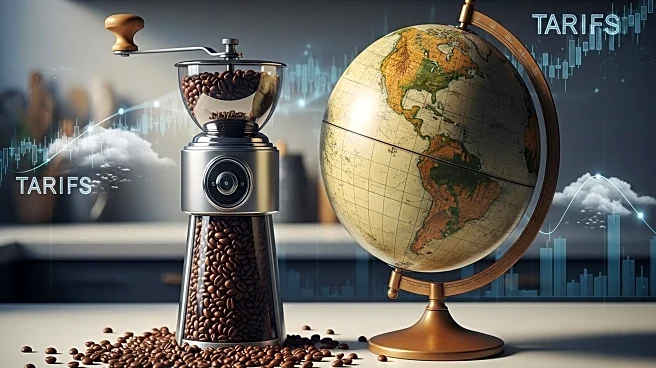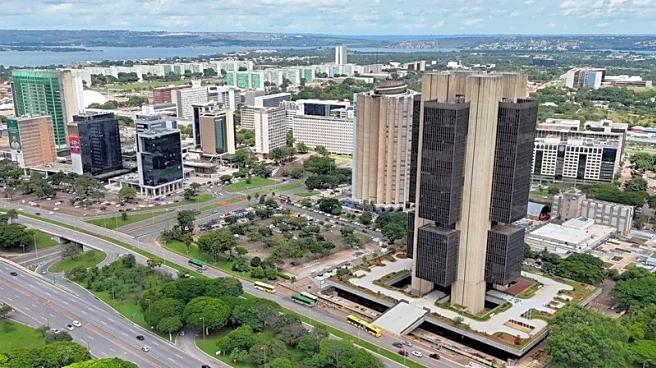What's Happening?
Coffee prices have surged by more than 20% over the past year, marking the largest year-over-year increase in decades, according to the Consumer Price Index. This significant rise is attributed to tariffs and extreme weather conditions affecting major coffee-producing countries such as Brazil and Vietnam. These factors have disrupted supply chains and increased production costs, leading to higher prices for consumers at checkout.
Why It's Important?
The spike in coffee prices is a concern for both consumers and businesses in the U.S. Coffee is a staple for many Americans, and the increase in prices could affect household budgets and consumer spending patterns. For businesses, particularly cafes and restaurants, higher coffee costs may lead to increased menu prices or reduced profit margins. The situation highlights the vulnerability of global supply chains to geopolitical and environmental factors, emphasizing the need for diversified sourcing and sustainable practices.
What's Next?
If tariffs and adverse weather conditions persist, coffee prices may continue to rise, further impacting consumers and businesses. Stakeholders in the coffee industry might seek alternative suppliers or invest in technologies to mitigate the effects of climate change on coffee production. Additionally, policymakers could consider negotiating trade agreements to alleviate tariff pressures. Consumers may also adjust their purchasing habits, opting for cheaper alternatives or reducing consumption.












